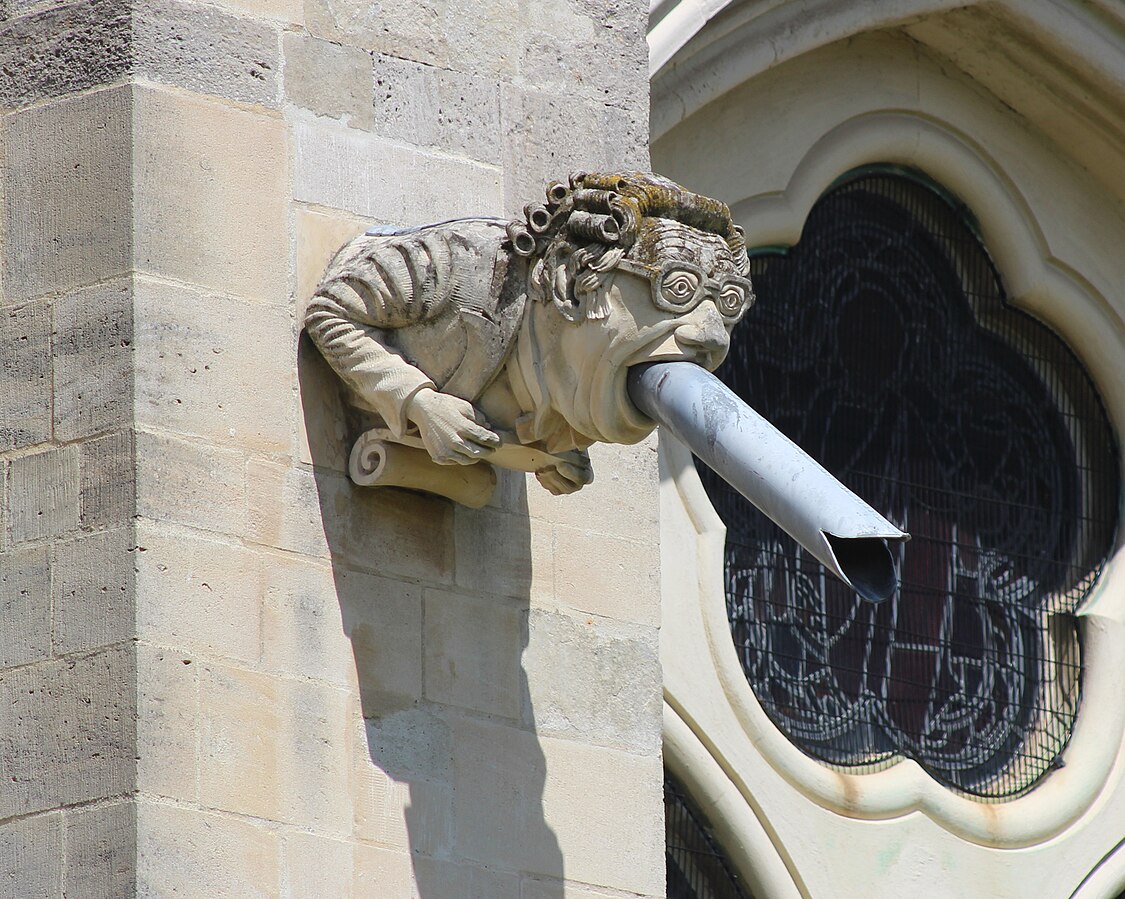Avoiding damp#
Whatever you do, you need to avoid your building being damp. Damp walls lose heat much faster, and damp makes the building deteriorate. Here are some of the main causes.
Water ingress. Make sure the roof is sound and that the rainwater clearance systems - gutters (called “rhones” in Scotland) and downpipes - are kept in good working order through regular maintenance to clear debris and spot problems. With the increased rainfall that comes with climate change, some buildings are already finding that they have to increase the capacity of their rainwater clearance to avoid wetting the walls of their building. Wet walls deteriorate and also make the inhabitants miserable because they lose 1/3 more heat than dry ones. You may also have water ingress at ground level into basement areas.

(c) Martinvl, CC BY-SA 4.0 https://creativecommons.org/licenses/by-sa/4.0, via Wikimedia Commons
Blocked vents. People and their activities release moisture into the building. If the building’s vents are blocked, then it’s hard for that moisture to escape. Some building operators deliberately block vents to avoid heat escaping and create damp that way. In many others, the walls have exterior air intake vents at ground level that get clogged with leaves and other debris.
Insufficient ventilation. Many buildings have design features that are intended to be used to vent warm, moist air from the building. These might include windows or window vents that open manually and in church buildings, rope pulls for opening the louvres on a tower. These supply fresh air to the occupants as required or, in some cases, are meant to be shut while a building warms up and when people are in, and only opened when they leave until the next time the heating comes on. Extractor fans can also be useful for venting moist air.
In traditional buildings:
Non-breatheable finishes. Traditional stone buildings require lime plaster and breatheable paints. Using non-breatheable finishes can cause mysterious damp problems. Many stone buildings have been pointed in cement, which traps damp in the stone. Sometimes workers will claim to use the right materials but still do the wrong thing. For instance, we’ve heard of one mixing lime mortar with PVA glue to point the stonework because it makes it easier to apply.
Inappropriate or incorrectly installed insulation. Again, materials should be breatheable and the design also has to allow airflow in the correct places, for instance, with loft insulation laid on the floor of a loft, at the eaves to ensure the space and materials above the insulation stay dry.
If your building is damp, dehumidifiers will dry it out more cheaply than turning the heating on. You can focus them just on the damp area. But you still need to fix the problem.
Advice for churches
Moisture in air can condense on cold surfaces, for instance, if you let lots of warm air into a very cold stone building on a fine spring day. In the winter, stained glass windows are often the coldest surfaces and so a good place to look for issues. Condensation on them can cause the colours the leach out of the glass.
